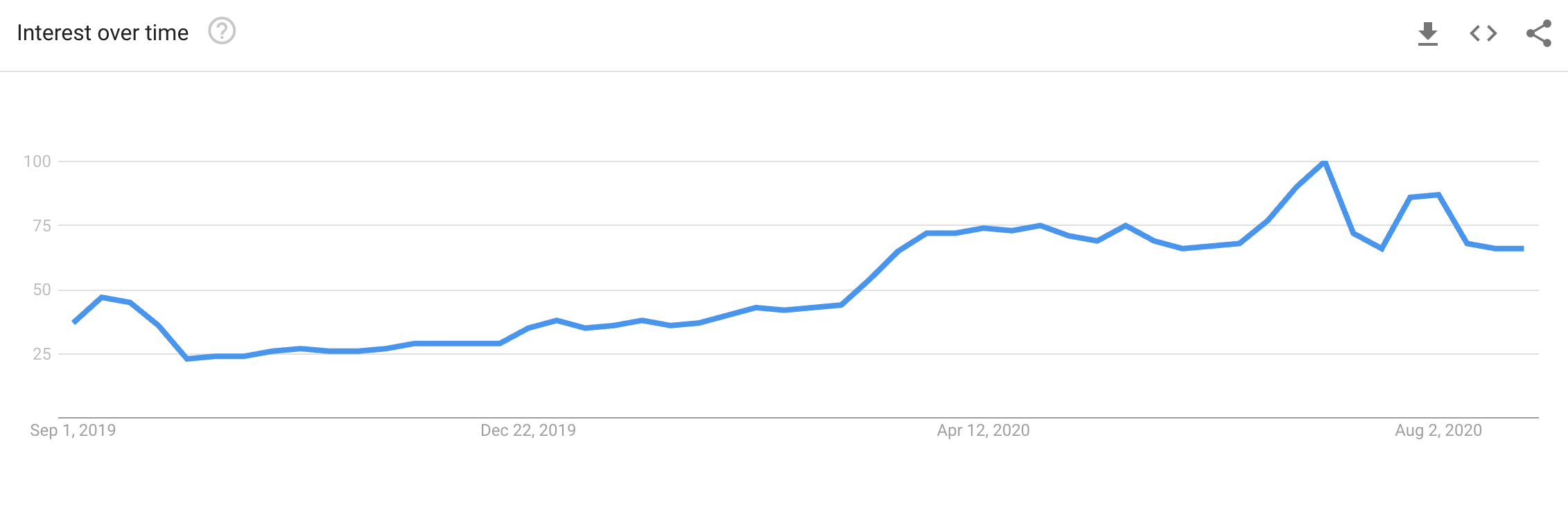Is your business in a position to fully adapt to the dynamic market environment we’re all experiencing in the wake of the COVID-19 pandemic?
Consumer behavior continues to shift and evolve as the months pass and people’s needs and desires in response to the pandemic change. More than ever, businesses need to be agile to keep on the pulse of the latest trends.
While traditional retail sales have seen a decline, e-commerce has experienced a 129% YOY growth trend across North America. In fact, U.S. e-commerce sales are projected to reach $709.78 billion by the end of 2020.
These drastic changes in the way we do business make it imperative for retailers that sell online to keep up with the emerging e-commerce trends so you can reach customers and meet their new needs, priorities, and preferences.
If your business is going to utilize the powerful platform that is Google to advertise, sell, and/or drive brand awareness, here are some tips to make sure you continue to stay relevant:
1. Seek Out New Popular Search Terms
What are the most popular search terms right now?
You can use Google Trends to search for a term or topic. Or explore stories and insights and keep up with the most recent trending searches. There’s even a featured section for Coronavirus Search Trends that will show you data about search interest in COVID-19 around the globe.
2. Research Your Topics
On the Google Trends page, you can start to gauge interest in particular topics and keywords. For example, you can generate graphs that will show you a certain term’s popularity over time. You can even see how many searches have been done for a particular term relative to all the searches on Google.
One of the most useful ways to use Google Trends is to compare search terms. For example, if you’re a haircare retailer, you might want to compare searches for “cut your own hair” (which has spiked in recent months) vs. “custom shampoo and conditioner” (which has remained rather steady).
Best of all, you will also be able to see related queries and rising topics. For example, when “cut your own hair” started to surge in April, there was also a growth in searches for “electric clipper.”
 3. Refine and Filter Your Search Results
3. Refine and Filter Your Search Results
As you’re exploring trends, you can get data across Google Search, Google Shopping, YouTube, and Image and News searches.
Make sure you use punctuation to your advantage:
- “xyz abc” – putting a search term between quotation marks will generate results that include that exact term.
- xyz + abc – a plus sign will get your result for the first OR second term. This is a useful strategy if there are multiple spellings (or common misspellings) for any of your search terms
- xyz –abc – a minus sign with include the first term while excluding the second. This type of query is especially helpful if there’s a non-relevant but popular phrase including your term. For example: Bears -Chicago
4. Make Sure Your Geography Is a Match
Have you shifted to serving a national or global audience now that your business is online? Are you catering to a tight-knit local market now that people are staying close to home? Do you know where people are searching the most for what is it your business has to offer?
If you’re now reaching an international audience, you can use the “Worldwide” dropdown menu on the Google Trends homepage to compare searches across countries and make sure your messaging is a fit. For example, if you’re an online pet supplier, you might have been interested to know that in March, U.S. consumers were searching more for pet toys than leashes, but it was the opposite trend in Italy.
You can also refine your search by a city or region to explore the popularity of certain terms. Google Trends can show you a heat map so you can see at a glance where your term is the hottest search.
 5. Automate
5. Automate
You may understandably be busier than ever trying to juggle the demand of family and business, so if you want an automated email update on your favorite topics and searches in a particular region, you can sign up for a Google Trends alert.
You can also check out Google’s Business Guide to help you adapt your digital marketing strategies in response to post-COVID trends and get ready for what’s next.
Want more help optimizing your Google marketing? JXT Group is a recognized Google Premier Partner – we’re experts in helping our clients manage the constantly shifting, dynamic online ecosystem, so that your digital marketing efforts will get results. Call us at 718-690-7302 to find out more.

